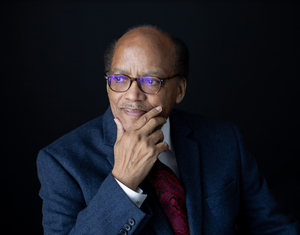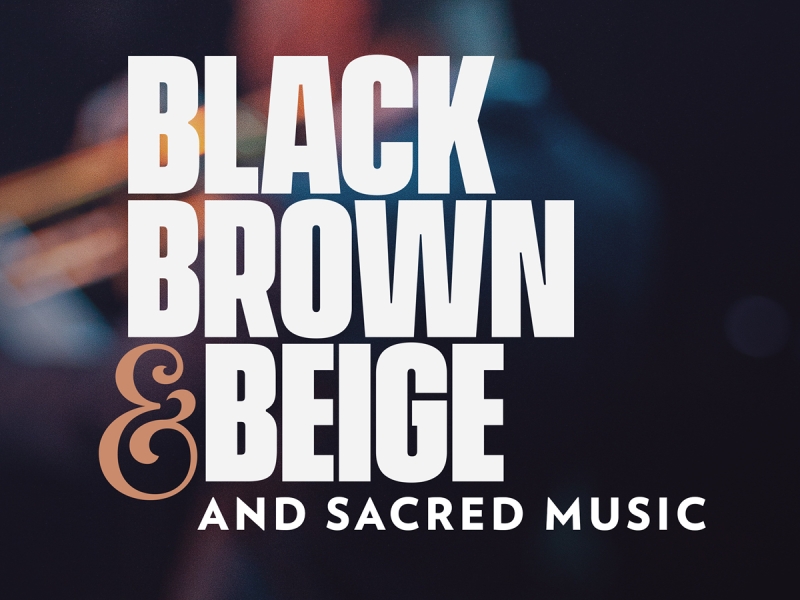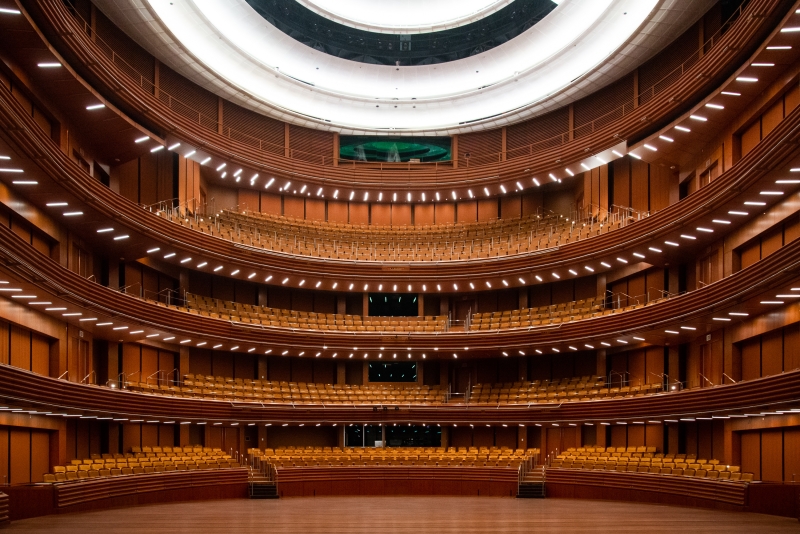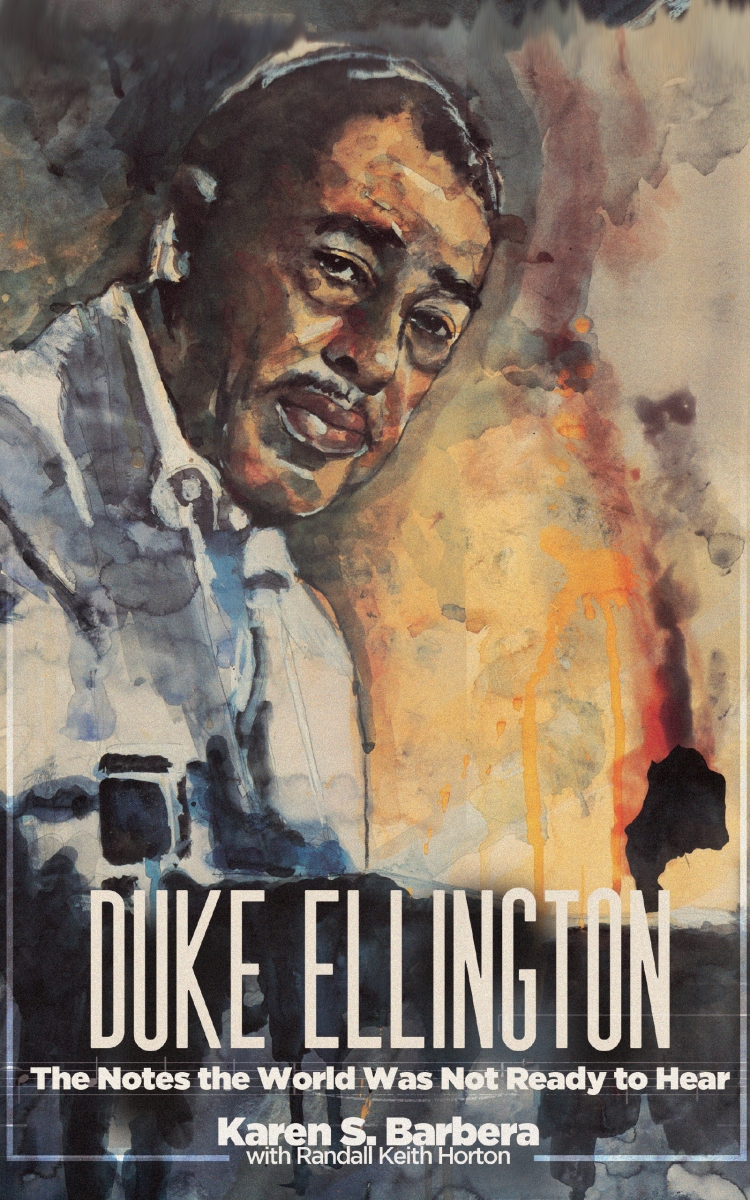Interview: Randall Keith Horton of BLACK, BROWN AND BEIGE at Steinmetz Hall At Dr. Phillips Center
Catching up with the orchestrator of Duke Ellington’s work that will have its professional world premiere at Steinmetz Hall at the Dr. Phillips Center on January 26th
 Continuing with the celebration of the opening of Dr. Phillips Center's Steinmetz Hall will be the professional world premiere of Duke Ellington's BLACK, BROWN AND BEIGE, a piece that first played at Carnegie Hall in 1943 and was created to "provide a more accurate accounting of African American history written for the first time by a member of his race." Critically panned simply because it was ahead of its time, Ellington never performed it in its entirety again. This version of the piece, which was commissioned by G. Schirmer, Inc. through Ellington's son Mercer in 1987 is arranged and orchestrated by music scholar and former Ellington bandmate Randall Keith Horton. I caught up with Mr. Horton to learn more about this piece, why it is so important (and appropriate for the Steinmetz opening celebration) and what audiences can expect from this performance.
Continuing with the celebration of the opening of Dr. Phillips Center's Steinmetz Hall will be the professional world premiere of Duke Ellington's BLACK, BROWN AND BEIGE, a piece that first played at Carnegie Hall in 1943 and was created to "provide a more accurate accounting of African American history written for the first time by a member of his race." Critically panned simply because it was ahead of its time, Ellington never performed it in its entirety again. This version of the piece, which was commissioned by G. Schirmer, Inc. through Ellington's son Mercer in 1987 is arranged and orchestrated by music scholar and former Ellington bandmate Randall Keith Horton. I caught up with Mr. Horton to learn more about this piece, why it is so important (and appropriate for the Steinmetz opening celebration) and what audiences can expect from this performance.
BWW: Randall it's great to meet you! Can we start by hearing a little about yourself and your background?
Randall Horton: I was born in Boston, Massachusetts and it was there I received the calling that led me to San Francisco and that in turn led me to Duke Ellington's side. He chose me to serve as his composing and conducting assistant. I was a church musician for several decades, but I'm retired from that now and all through those years I used my affiliation with churches and synagogues to have a performing platform for the sacred music of Duke Ellington.
 I am excited to hear more about BLACK, BROWN & BEIGE. It's a piece I haven't heard of before now, and I am sure that may be the case for many. What can you tell us about it?
I am excited to hear more about BLACK, BROWN & BEIGE. It's a piece I haven't heard of before now, and I am sure that may be the case for many. What can you tell us about it?
As Maestro Ellington made clear at the world premiere on January 23, 1943 at Carnegie Hall, BLACK, BROWN AND BEIGE tells a story about the movement of Africans to this country, them becoming slaves and becoming emancipated from slavery and then creating their own culture in Harlem. The piece is in three movements starting with Black, which tells the story of coming from Africa and being in slavery. There are two main themes in Black, the first relates to slaves working ("Work Song") and the second is a spiritual theme which depicts Ellington's perception of slaves appropriating spirituality and eventually Christianity. The second movement, Brown, is about the emancipation of the slaves. The movement starts with a West Indian flavor, so I assigned that opening section to steel drums. We're not going to be able to use steel drums in this performance, but that's the sound. The movement then goes into "Emancipation Celebration" which takes place in Congo Square in New Orleans. There was a dance there in celebration of emancipation. Next the story focuses on the fact that the freed slaves don't have anywhere to go, so you have a lament. The third part of the second movement is about the relationships of the people. You have a woman and a man singing about how the blues just makes you so sad. The woman sings her part and then the man answers. It's my resetting of that song, so that it becomes a statement that exists within the black community. It's a state of sadness that I made into a duet. And then, in contrast, in the third movement, Beige, you get joy, happiness and dancing. It's the early 20th century and up and down the street in Harlem there's dancing and people are having a good time. In this movement you start out with a feeling of joy and celebration. I took Ellington songs and I put them in there so you just get a great feeling of celebration. And then it moves on, to the most profound elements in the third movement, two more songs that I know Ellington wanted in there since he put them in his 1958 recording also called "Black, Brown and Beige". The first is a melody from the first movement, "Come Sunday", but now it has lyrics, and the second song is "The 23rd Psalm". I interpolated them into the third movement to contrast the blues in the second. And then the piece ends with a big, full orchestra sound bringing back some of the melodies that we've heard throughout the whole piece.
This is the professional world premiere of the orchestration that was created at Ellington's request. Yes?
Yes. It will be the professional world premiere. The world premiere was with an amateur orchestra in Sacramento, California in 1988 but this is the professional world premiere.
 Why do you think BLACK, BROWN & BEIGE is a good choice for the opening of Steinmetz Hall?
Why do you think BLACK, BROWN & BEIGE is a good choice for the opening of Steinmetz Hall?
First of all, the audience will witness the miracle of bringing a piece like this to its next step long after Ellington's death. Duke chose me to work with him and then, in turn, I wrote the piece in a state of prayer and connection with him. Besides that, I would say the fact that this audience will be the first in the world to hear this music at a professional level as Ellington originally envisioned it. So, a premiere piece for the premiere of the space.
I understand that the concert will also include some of Ellington's sacred music? Is that essentially selections from his three sacred concerts?
That is correct. At the request of the Ellington family, I created my own version of the sacred music, and chose music from the sacred concerts. The first part focuses on the omnipotence of God, which is from the Old Testament and the second part on the love of God, from the New Testament.
There's quite a lineup of artists for this concert - The Royal Philharmonic, Lincoln Center Jazz Musicians, the Bethune-Cookman Chorale and Audra McDonald! Have you worked with any of them before?
Yes, I did consult once for Jazz at Lincoln Center for a performance of Ellington's Sacred Music and worked with a very fine gentleman whose name is Rodney Whitaker. It was a wonderful experience. I was officially there to train the choir but I was also there to help with anything the big band might need. Rodney Whitaker is leading the jazz elements in this concert, he's the bassist, who is in charge of the big band. So, he and I have just reconnected and it's been a wonderful experience.
How can people learn more about the story of BLACK, BROWN AND BEIGE?
If people are interested in finding out a little bit more of the story about this music, I have co-authored a book with Karen Barbara, Duke Ellington - The Notes the World Was Not Ready to Hear, that tells more of that story.

Anything else you would like to mention about BLACK, BROWN AND BEIGE?
I think that is kind of noteworthy today, in addition to telling the history of African Americans for the first time by a member of its own race in 1943, Ellington was also trying to elevate American music on par with classical European music. He was trying to say this is American music. And hopefully the audiences are a little more progressive and able to actually hear the messages as Ellington intended. One more thing to note is that the relevance of all this music is apropos with everything going on in the country, especially with voting restrictions and issues in politics it's going back to the 1960s, so that is definitely relevant to performing this music today.
BLACK, BROWN AND BEIGE performs at Steinmetz Hall on Wednesday, January 26th at 7:30 PM. To learn more about BLACK, BROWN AND BEIGE or to purchase tickets visit https://grandcelebration.drphillipscenter.com/ or call the Bill & Mary Darden Box Office at 407.358.6603. Dr. Phillips Center for the Performing Arts is located at 445 South Magnolia Avenue, Orlando, FL 32801
Comments

Videos
